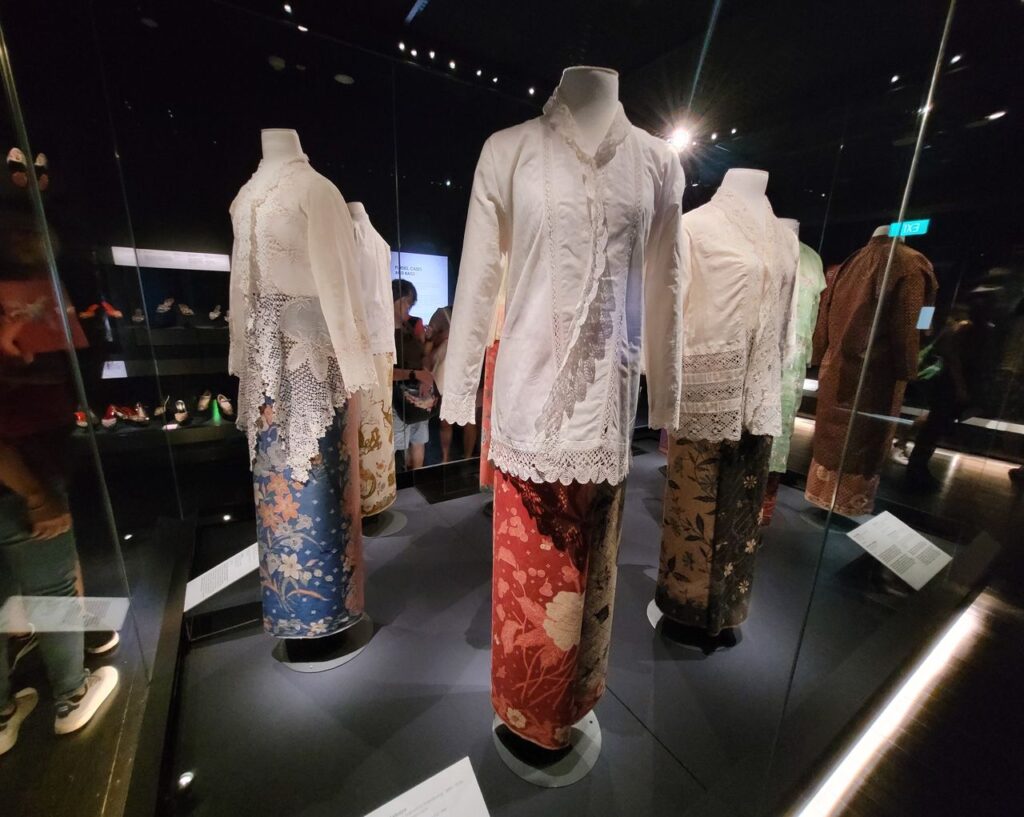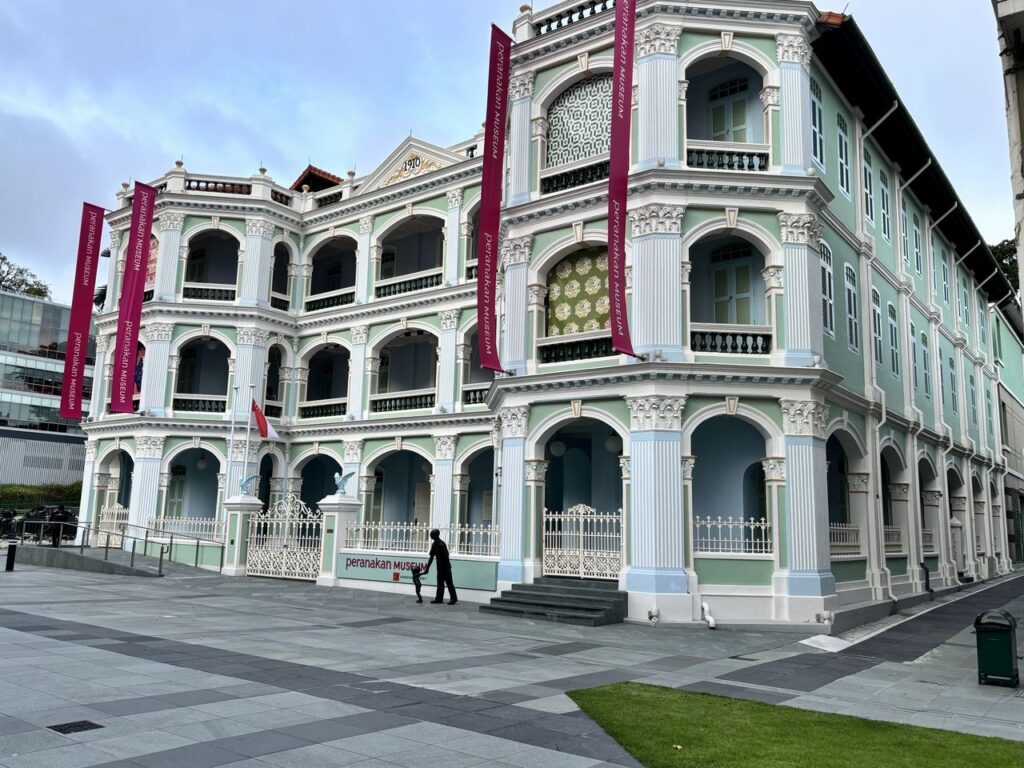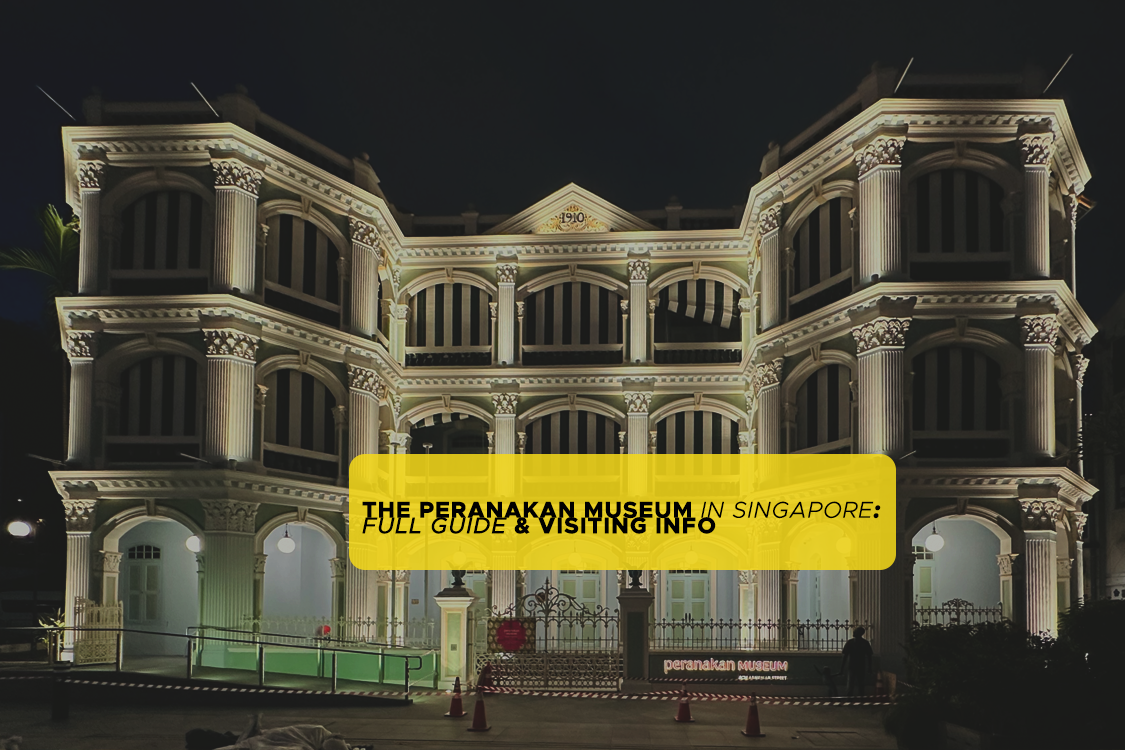Nestled in the heart of the city, the Peranakan Museum in Singapore stands as a testament to the vibrant fusion of cultures that defines Southeast Asia. This exquisite museum, revered for its comprehensive collection of Peranakan artefacts, offers visitors a deep dive into the rich heritage of the Peranakan community—a unique blend of Chinese, Malay, Indian, and European influences.
A Glimpse into Peranakan Heritage
The term “Peranakan” is derived from the Malay word “anak,” meaning child, signifying the locally born descendants of foreign traders who settled in Southeast Asia and married local women. Predominantly, this community consists of Chinese Peranakans, though it also includes Arab, Indian, and Eurasian Peranakans, each contributing to the kaleidoscope of cultures in the region. The Peranakan Chinese, or Baba-Nyonya, culture is particularly notable for its intricate blend of southern Chinese traditions with local Southeast Asian and European elements.
Unveiling the Museum’s Treasures
Located in a conserved neoclassical building, the former Tao Nan School, the Peranakan Museum is a National Monument in its own right. Built in 1912, this building once served as a pioneering Hokkien educational institution in the Straits Settlements. Its architectural design, reminiscent of Straits Settlements bungalows, features rooms encircling a central hall, with toilets and kitchens situated externally.
The museum proudly houses the world’s most exquisite collection of Peranakan objects, displayed across ten permanent galleries spanning three floors. Visitors are treated to a vast array of jewellery, furniture, and textiles, each piece narrating a story of the Peranakans’ rich cultural heritage.
Interactive and Multimedia Exhibits
The museum comes alive with its interactive and multimedia exhibits, designed to engage and educate visitors about the multifaceted Peranakan culture. Highlights include:
- An elaborate depiction of a 12-day Peranakan wedding, offering insights into the community’s matrimonial traditions.
- Stories of prominent Peranakans who have played significant roles in Singapore’s history, showcasing their contributions and the evolution of the Peranakan identity over time.
- Hands-on exhibits that allow visitors to explore various aspects of Peranakan culture, from its Chinese, Malay, and Indian roots to its contemporary manifestations.
Discovering the Layers of the Peranakan Museum
The Peranakan Museum in Singapore, revitalized in 2024, offers an unparalleled exploration of the Peranakan heritage, a unique cultural tapestry woven through centuries of trade, migration, and the confluence of diverse communities in Southeast Asia. Spanning three levels, each dedicated to distinct aspects of Peranakan life—Origins, Ceramics and Food Culture, Family and Community Life, Style—the museum invites visitors to immerse themselves in the rich, hybrid culture of the Peranakan people.
Level One: Origins
The ground floor, themed “Origins,” serves as the introductory canvas, painting a picture of the Malay-Indonesian world’s crafts and material culture. This gallery sets the stage for understanding the Peranakan identity’s evolution, born from the melding of indigenous and migrant cultures. A striking feature is the hundreds of photographs from past and present-day Peranakans, showcasing the community’s diversity and the richness of its cultural heritage. Video interviews add a personal touch, with community members sharing their reflections on what being Peranakan means to them.
Level Two: Ceramics and Food Culture
Ascending to the second level, visitors encounter the vibrant world of Peranakan ceramics and food culture. This gallery highlights the exquisite ‘nyonya ware,’ showcasing a range from traditional pieces to contemporary interpretations. The tok panjang, a traditional long dining table, is meticulously laid out with commissioned dining ware, offering a glimpse into the elaborate Peranakan culinary traditions. Video presentations related to Peranakan food further enrich visitors’ understanding of this crucial aspect of Peranakan culture.

Family and Community Life
Still on the second floor, the museum explores the theme of “Home,” presenting a kaleidoscope of Peranakan domestic life. From attap houses in kampongs to modern HDB units, the diversity of Peranakan homes is on full display. The gallery reunites furniture, portraits, and furnishings, some of which shared the same home, in a display focused on historical houses and architecture. This section offers insights into the customs, foods, languages, and beliefs that shaped the Peranakan community’s daily life.
Level Three: Style
The third floor delves into “Style,” showcasing the Peranakans’ flair for batik, decorative textiles, fashion, and jewellery. The batik gallery traces how the demand for diverse designs and motifs grew among the Peranakan communities, leading to the flourishing of batik centres in Java. The fashion gallery moves beyond the iconic sarong kebaya to display a wide range of menswear, footwear, bags, and accessories, highlighting the cosmopolitan and hybrid influences on Peranakan fashion.

Decorative Textiles and Jewellery
The decorative textiles section emphasizes the role of needlework in Peranakan celebrations, particularly weddings. These embroideries transformed homes into symbolic spaces for rituals and festivities. The jewellery gallery illuminates the diverse origins of the Peranakan community, with over 180 pieces of jewellery that trace the evolution of Peranakan adornments, reflecting the community’s interactions with multiple cultures over centuries.
Don’t Miss The Best Tours in Singapore
Why Visit the Peranakan Museum?
The Peranakan Museum is more than just a repository of artefacts; it’s a vibrant cultural space that celebrates the enduring legacy of the Peranakan community. Whether you’re a history buff, a cultural enthusiast, or simply curious about the diverse tapestry of Southeast Asian heritage, the museum offers a unique and insightful experience.
Planning Your Visit to the Peranakan Museum in Singapore
The Peranakan Museum, a cornerstone of cultural heritage in Singapore, offers an enriching journey into the history and lifestyle of the Peranakan community. With its diverse exhibits spanning three levels, the museum invites visitors to delve into the intricate blend of cultures that make up the Peranakan identity. Below is essential visitor information to ensure a seamless and enriching museum experience.
Opening Hours of the Peranakan Museum
- Daily: 10am – 7pm
- Fridays: 10am – 9pm
Please note that admission to all galleries ends 30 minutes before closing time. This allows visitors enough time to enjoy the exhibits without rush.
Ticket Information: Entry Fees to the Peranakan Museum
To ensure a smooth entry, visitors are encouraged to pre-purchase their admission tickets online. Here’s a quick guide to ticket prices:
- Permanent Galleries Only:
- Singaporeans / PRs: FREE (Present Pink or Blue NRIC for verification)
- Foreign Residents / Tourists: $12
- Children 6 years and below: FREE
- Concession: $8 (Senior Citizens, Students, Persons with Disabilities (PWD) and 1 caregiver)
Concession ticket holders must present valid proof of identity (e.g., passport, school pass) at the Visitor Services counter to enjoy concession admission. For Singaporeans and PRs, do remember to bring your Pink or Blue NRIC for verification purposes.

Getting to the Peranakan Museum
Address: 39 Armenian St, Singapore 179941
By MRT
The Peranakan Museum is conveniently located a 10-minute walk from City Hall, Bras Basah, or Bencoolen MRT stations, making it easily accessible via Singapore’s efficient public transport system.
Read Also: MRT in Singapore: Transport Guide for Tourists 2024
By Car
- Drop-off or Pick-up: Accessible via Loke Yew Street and Coleman Street.
- Parking: Public car parks are available in the vicinity of the Peranakan Museum. Alternative parking spaces can be found nearby at NTUC Income Centre, Funan, Excelsior, and Peninsula Plaza
By Bus
The Peranakan Museum is easily accessible by bus, with several bus stops located nearby. Here are the bus stops along with the bus services that stop at each, ensuring you can find a convenient route from your location:
- Capitol Bldg (04111): Bus services 7, 14, 14e, 16, 16M, 36, 77, 106, 111, 131, 162, 162M, 167, 175, 652, 656, 660, 663, 665, 850E, 857, 951E.
- SMU (04121): Bus services 7, 14, 14e, 16, 16M, 36, 77, 106, 111, 124, 131, 147, 162, 162M, 166, 167, 174, 174e, 175, 190, 652, 656, 660, 663, 665, 850E, 857, 951E.
- Armenian Ch (04142): Bus services 2, 12, 12e, 32, 33, 51, 61, 63, 80, 197, 640E.
- Stamford Ct (04143): Bus services 124, 147, 166, 174, 174e, 190, 640.
- Aft CHIJMES (04159): Bus services 2, 12, 12e, 33, 147, 190.
- City Hall Stn Exit B (04167): Bus services 61, 124, 145, 166, 174, 174e, 197.
- Aft City Hall Stn Exit B (04168): Bus services 32, 51, 63, 80, 195, 851, 851e, 961, 961M.
Read Also: Public Buses in Singapore: Transport Guide for Tourists 2024
In Conclusion: The Peranakan Museum in Singapore
The Peranakan Museum in Singapore is a cultural jewel, offering a window into the soul of Southeast Asia through the lens of the Peranakan community. It stands as a celebration of diversity, history, and the power of cultural fusion. A visit to the museum is not just an educational journey; it’s an immersion into a world where tradition and modernity coalesce, creating a rich, vibrant tapestry that is uniquely Peranakan.
If You Liked Our Article About The Peranakan Museum in Singapore, You Also Might Like
- Victoria Concert Hall Clock Tower: Tickets & Theatre Events 2024
- Sunrise and Sunset in Singapore: Romantic Places & Viewpoints 2024
- Street Food in Singapore: What to Try & Centres 2024
- Skypark Observation Deck Singapore: Opening Hours, Tickets & Info 2024
- Singapore Flyer: Opening Hours, Tickets & Info 2024
- Sentosa Fun Pass: Save Up to 60% on Tickets in 2024
- Kingfisher Wetlands at Gardens by the Bay: Guide 2024
- Hell Museum in Singapore at Haw Par Villa: Price & Visiting Info 2024
- Green Rail Corridor in Singapore: Visitor Guide & Map 2024
- Gardens By The Bay in Singapore: Tickets, Hours & Things to See 2024
Don’t Miss The Best Tours in Singapore
